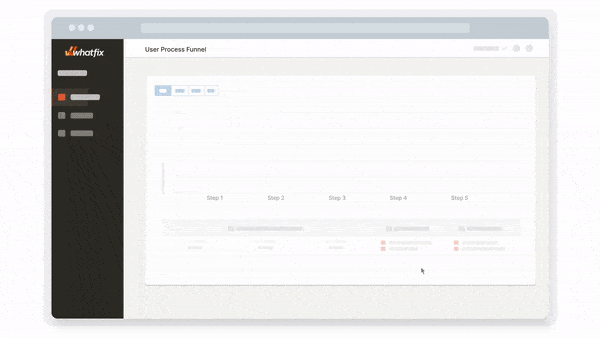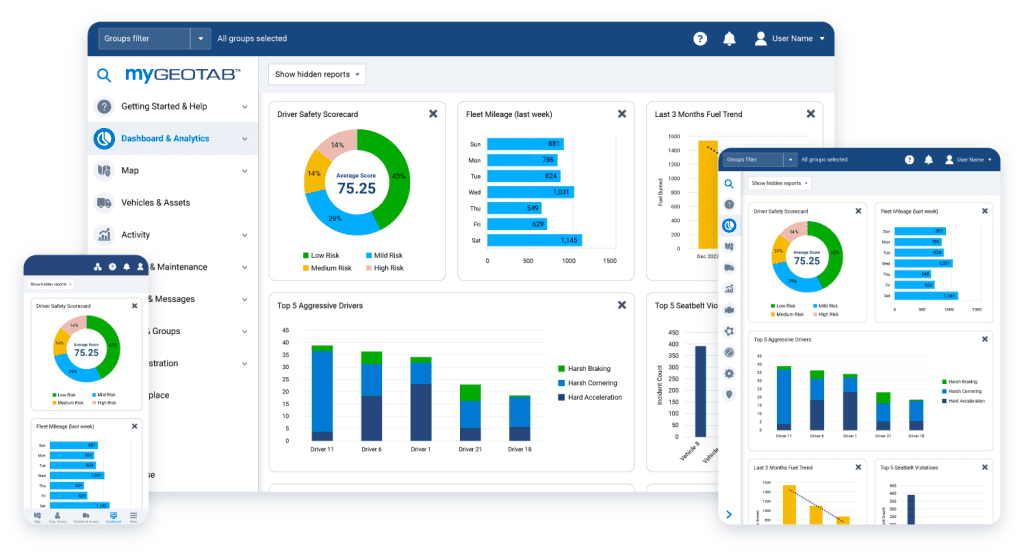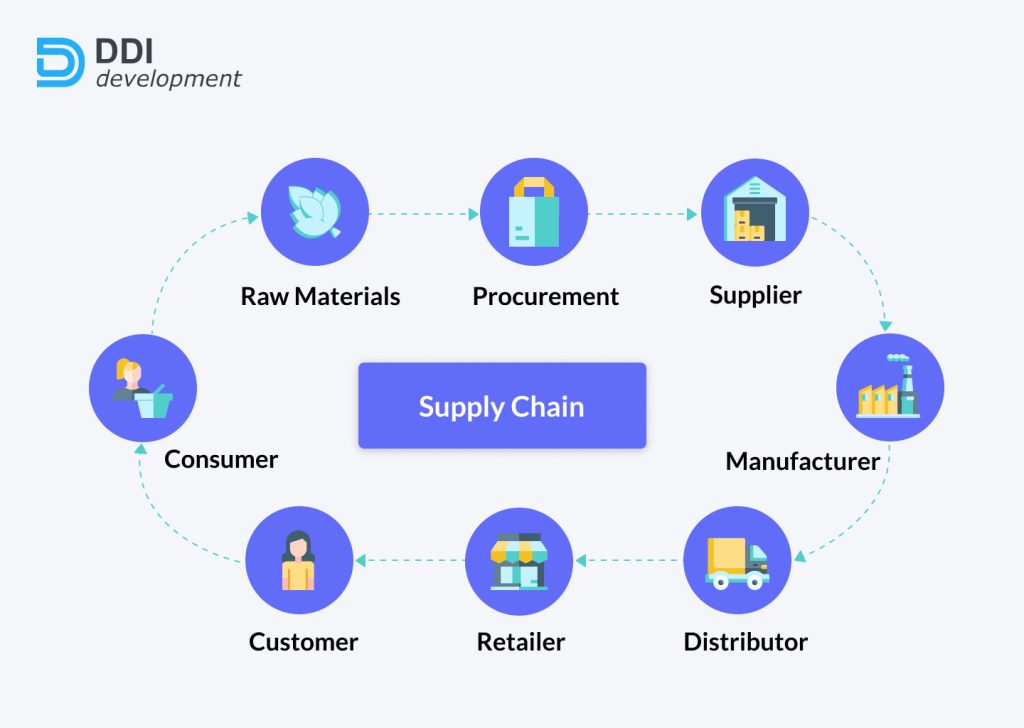


Legacy approaches in logistics and transportation leaves companies struggling to meet today’s demands for speed and excellence. Digital transformation enables logistics companies to modernize outdated systems, deliver automated operational processes, and provide better customer experiences.
In some ways, the logistics sector is digitally advanced compared to other industries. However, significant gaps still need to be addressed in technology adoption across different areas. 75% of logistics company leaders said that any freight and logistics company not focusing on building digital capabilities would endanger their business.
This article covers examples of transformative technologies in logistics and transformation. You’ll also find actionable strategies to accelerate change in your organization.
Digital transformation revolutionizes logistics operations by embracing innovative technologies. This shift equips you to meet escalating expectations and market demands. It also positions your company for long-term success.
Still, 72% of logistics company leaders said that at an industry level, there is an ignorance of digitization and a need for more technology roadmap regarding what needs to be done.
Key elements include automating processes and applying data analytics. Adopting new tech enhances workforce productivity and customer service. It also allows you to differentiate your logistics and transportation organization from competitors.
Digital transformation initiatives take time and effort, but the benefits create positive change for employees and customers. Here’s a look at some of the benefits you can expect.
Digital transformation powers significant cost savings across logistics operations. For example, automation reduces labor costs by minimizing repetitive tasks. Data-driven route optimization cuts fuel costs and carbon emissions.
Digitalization allows you to do more with less, from warehousing and inventory management to transportation and last-mile delivery. You boost efficiency while reducing operational costs.
In the current market, customer expectations for fast, transparent delivery are sky-high. Digital solutions help you meet and exceed those expectations consistently. A digital-first customer experience builds trust and satisfaction.
Web and mobile applications allow customers to track orders and directly communicate issues. For example, AI-powered chatbots provide instant self-service support around the clock. Predictive analytics anticipates needs to offer personalized recommendations.
Many supply chains struggle with inefficiencies and lack of real-time visibility. Digital transformation resolves these pain points. For example, automated warehousing and inventory management minimize manual efforts and human error.
Digital transformation empowers you to deploy inventive services beyond traditional transportation. For instance, drone deliveries and autonomous trucks provide fast fulfillment. Digital freight marketplaces connect shippers and carriers with excess capacity. These offerings represent significant revenue opportunities for forward-thinking logistics leaders.
All of this opportunity also comes with its own set of challenges. Here are some pitfalls to remember when taking on digital transformation.
Outdated systems and technologies are a roadblock. Existing logistics and transportation infrastructure often lack flexibility to adapt to new digital requirements. Integrating modern solutions with legacy platforms is complex.
That said, organizations know they need to make this change, as 67% of shipping and logistic companies said they have a formal digital transformation strategy, while 31% say they’re considering or evaluating such a plan.
Data from the U.S. Bureau of Labor Statistics shows that 47% of jobs are susceptible to automation between 2010 and 2030. Many employees fear this, but engaging your team throughout the process builds understanding and enthusiasm for positive change.
To overcome resistance to change, logistics and transportation must prioritize effective change management strategies to facilitate a smooth transition, involve those most impacted, and communicate why it’s happening. Share digitalization benefits to gain stakeholder buy-in and alignment.
With Whatfix Analytics, track and analyze end-user behavior to identify areas of digital friction and where your employees and customers struggle to use new technology. This empowers professional services IT teams to identify areas of end-user friction, map optimal user flows, build flows for different user cohorts, and more.

Use this data to create in-app guidance and end-user support for technology implementations. Then, continuously optimize and test new workflows and features to make more efficient, user-friendly technology experiences that drive value.



Sheila Dusseau, Head of Global Legal Operations at Ferring
Digital transformation only works with digital proficiency. You need comprehensive training programs to upskill your workforce on new tools and digital capabilities. New hires also can benefit from upskilling, as on average, 44% of new hires‘ skill sets must be updated to fulfill their positions. Providing the right support ensures employees can confidently use technologies for maximum impact.
With Whatfix’s digital adoption platform (DAP), enable your technology end-users with contextual in-app guidance and moment-of-need support on your company’s specific workflows and digital experiences. With Whatfix’s no-code Visual Editor, non-technical team members can create in-app experiences that engage users and assist in the flow of work.


With Whatfix, create:
Software clicks better with Whatfix's digital adoption platform
Enable your employees with in-app guidance, self-help support, process changes alerts, pop-ups for department announcements, and field validations to improve data accuracy.
Taking on digital transformation for transformation’s sake can waste resources. Align your technology investments with overarching strategic goals and priorities. Track key metrics to measure ROI and performance – ultimately driving ROI from your digital investments.
Digital transformation is reshaping traditional processes and operations. Let’s explore examples of how cutting-edge technologies are driving innovation and efficiency.
Tasks like demand forecasting and inventory management are rarely easy. Predictive analytics provides the solution by using big data. Sophisticated algorithms analyze massive datasets to identify patterns and trends.


A data-driven approach allows you to forecast demand and proactively adjust inventory levels accurately. Logistics and transportation organizations can optimize stock based on predicted customer needs. Predictive maintenance models can also you to potential failures before they occur.
For example, organizations are leveraging modern data sharing with Snowflake to power research and analysis with comprehensive access to historical and real-time data for better planning for more equitable access across demographics and localities.
Lack of visibility impacts asset monitoring and shipment tracking capabilities. IoT-enabled telematics removes these blind spots with real-time sensor data and connectivity.
For example, GPS and RFID tags reveal shipment locations and conditions. You can also optimize routes and maximize asset utilization with these rich data streams. These capabilities enhance operations at every logistics touchpoint.
Lantronix’s PoE+ switches provide power and remote access to more than 10,000 traffic intersections in New York City. The NYDOT can now remotely collect vital traffic information needed to monitor trends and improve service as well as assess safety needs.
For transportation companies, efficient fleet operations are mission-critical. Digital fleet management software centralizes and automates key functions. For example, smart scheduling helps with planning and reduces risks for drivers.


For example, in Northern New Jersey, where Verizon operates more than 4,000 service vehicles, managers use Networkfleet to pinpoint the exact location of vehicles before sending mechanics out to get them.
Most supply chains remain bogged down by fragmented data, manual processes, and disconnected systems. Cloud-based SCM software provides a single unified platform to transform this chaos into orchestrated excellence.


You gain full visibility into inventory levels, order tracking, warehouse management, and more. Suppliers, partners, and customers collaborate seamlessly by accessing the same information. Every stakeholder stays synchronized for agile decision-making.
For example, Blue Yonder brings together end-to-end supply chain solutions with a resilient, multi-enterprise network for a true autonomous supply chain. All to contribute to a modern, connected ecosystem.
On-premise data centers and legacy IT restrict agility. Cloud computing eliminates these constraints through flexibility, remote access capabilities, and security. Those are some of the reasons why cloud computing is considered the most impactful technology for digital transformation among shipping and logistics firms.
For example, Deloitte offers transformation through innovative applications of the cloud. Their full spectrum of capabilities can support businesses throughout the journey to the cloud.
Blockchain’s decentralized, immutable ledger restores trust in your logistics transactions and data sharing. Each shipment’s location, timestamps, and documentation are permanently recorded.
This supply chain transparency combats fraud, simplifies audits, and resolves disputes quickly. Customers track orders confidently while sensitive data remains secure through cryptography.
For example, UPS has shown interest in a capability called “automated determination,” when a UPS package is scanned at any point, the blockchain system can automatically determine the best or most efficient route by drawing on data from all the connected carriers. The blockchain ledger can also record when the package arrives.
AI algorithms process massive data streams to reveal powerful insights. You can use this intelligence to optimize logistics operations and delight customers. The technology accounts for countless variables, continuously learns, and minimizes inefficiencies.
For example, AltextSoft solutions offer optimized, AI-powered logistics customers can do smarter route planning by considering historical and real-time data on road conditions, weather, traffic, wait time, maintenance stops, and more.
Traditional transportation models don’t meet today’s on-demand and sustainability expectations. Within a single MaaS application, customers browse and book rides across public transit, ridesharing, carsharing, bikes, and scooters. MaaS simplifies mobility while reducing environmental impact.
Research shows that the integration of various transportation services into mobility as a service enables more flexible mobility independent of one’s own vehicle. With the availability of shared transportation, more and more urban households are giving up ownership of their own vehicles and increasingly using environmentally friendly and resource-saving modes of transportation.
Matching logistics capacity with fluctuating demand can be an uphill battle. Demand planning software resolves this problem. These AI-driven solutions analyze historical data, market trends, and other factors to forecast future transportation needs.


For example, InPost experienced difficulties with demand forecast accuracy during the pandemic and needed to implement innovative solutions that would improve its entire operational performance. Demand planning allowed them to optimize resource usage and reduce operational costs while keeping up with their client’s demands.
Customers demand faster shipping speed and convenience. Cutting-edge technologies automate last-mile logistics. For example, autonomous trucks and drones optimize routes with AI while avoiding traffic.
FIDELITONE successfully integrated with a company’s ERP to create real-time visibility through the FIDELITONE Partner Portal. FIDELITONE also implemented customer surveys and a weekly scorecard to keep a pulse on performance and satisfaction. This turnkey solution addressed every aspect of last-mile delivery.
Digital transformation is challenging, costly, resource-intensive, and has lengthy implementation and migration cycles. To complicate matters, no two digitalization projects are the same.
Accelerate your logistics and transportation digital transformation by enabling your technology end-users (internal staff and customers) with contextual in-app guidance and real-time support with Whatfix’s digital adoption platform (DAP).
Whatfix provides logistics and transportation IT teams with a no-code Visual Editor to create in-app assistance that contextual guides end-users on complex processes and digital experiences, enabling them to utilize digital platforms correctly and drive business outcomes.



This reduces time-to-proficiency for new end-users and achieves new levels of productivity and proficiency through better software adoption post-implementation. It also provides customers with self-service, personalized, and guided user experiences.
Whatfix empowers professional services organizations to:
With Whatfix, you can enable your end-users with contextual, guided, and self-service experiences to help them drive value from digital investments and maximize their productivity. It also actively works to identify areas of end-user friction to continuously optimize user experiences and build user-friendly digital solutions.
This makes it easier to adjust software training and adoption strategies. All to empower transportation and logistics employees and customers to maximize the value of digital tools and manage operations with ease.
Ready to learn more? Request a demo to see how legal software clicks better with Whatfix now!


Thank you for subscribing!